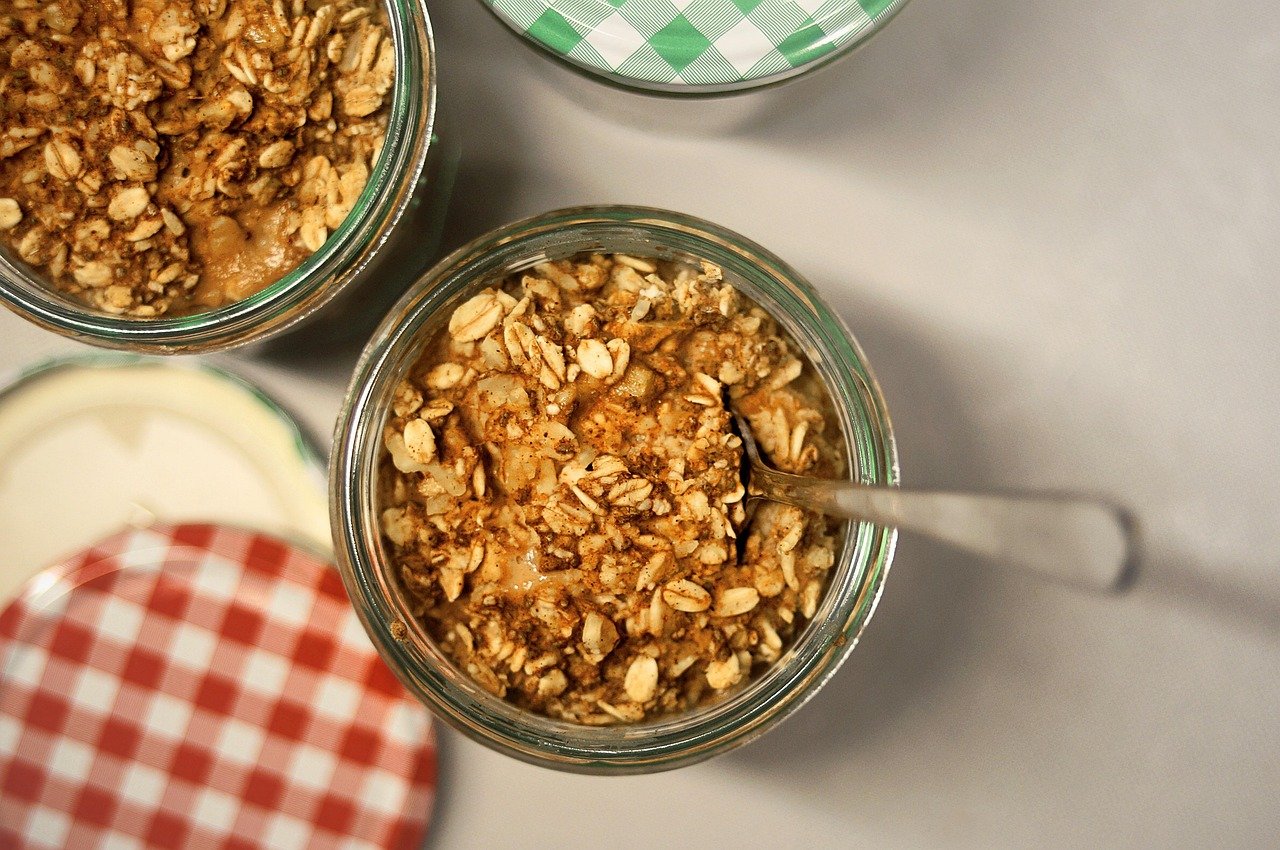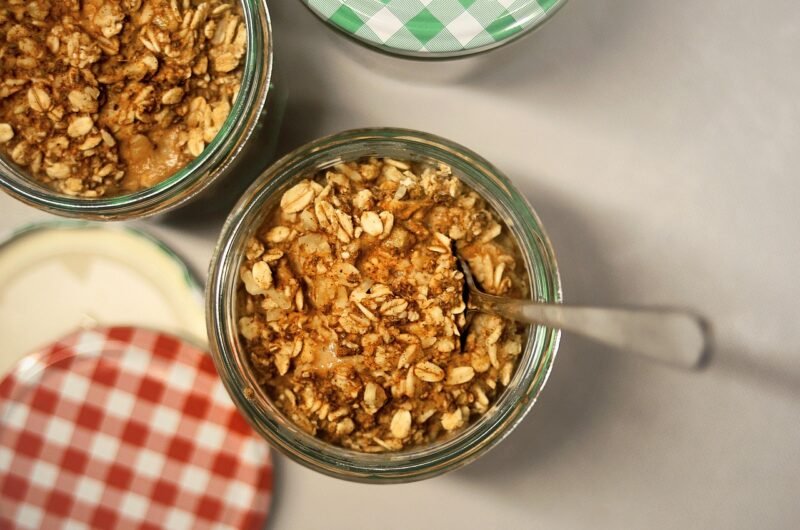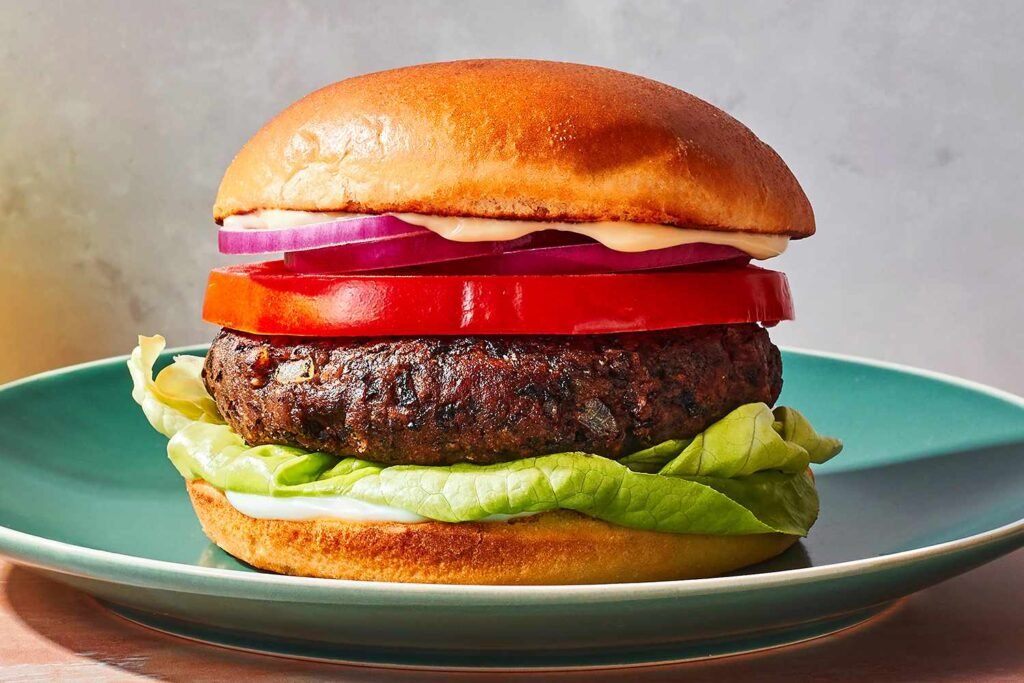If you’re looking for a quick, satisfying breakfast that is both plant-based and utterly delicious, then you will love our Easy Plant-Based Overnight Oats Recipe Formula. Not only is it simple and tasty, but it is packed with nutrients to keep you going all morning.
It a great way to start the day with a boost of energy and nutrients. By making it the night before, you don’t have to stress about what to eat in the morning. Plus, you can customize the recipe to fit your taste preferences! The best thing about this formula, is that you can make it different every time to keep it interesting.
Our personal favorite is a big dollop of crunchy peanut butter and topped with sliced banana
What Are Overnight Oats?
Overnight oats are as simple as they sound. You take some rolled oats and combine them with a few other ingredients, like almond milk and chia seeds, and let the oats soak in the fridge overnight. That’s it! The oats absorb the liquid and soften, so in the morning you have a delicious, creamy, and nutritious breakfast ready to go.
Since overnight oats do not require any cooking, they are a no-fuss, quick and easy way to prepare breakfast. This makes them the perfect option for busy mornings and family life when you’re running behind and need something to grab and go.
In our household we make them on a weekly basis!
The Benefits of Overnight Oats
One of the greatest benefits of making overnight oats is that they are a great source of fiber, and are a heart-healthy and satiating breakfast option. Oats are also a source of beta-glucans, a type of soluble fiber that has been shown to help lower cholesterol levels.
Additionally, overnight oats are a good source of important vitamins and minerals, like magnesium, potassium, and B-vitamins. They are also a great source of plant-based protein, making them an incredibly filling and nourishing meal.
So there you have it: our delicious and easy plant-based overnight oats recipe. It is the perfect breakfast option for busy mornings, and is packed with nutrition. We hope you give it a try soon and enjoy it as much as we do!
Tips For Customizing Your Overnight Oats
Once you’ve got the hang of the formula for our basic overnight oats, feel free to get creative! There are so many ways you can customize this recipe to fit your taste preferences and dietary needs.
You can add in different fruits, nuts, seeds, and even a dollop of your favorite nut butter. You can also experiment with the flavorings, like adding a drop of almond extract or stirring in a bit of cocoa powder for a deliciously chocolatey treat.
Easy Plant-Based Overnight Oats Recipe Formula
Course: BreakfastDifficulty: Easy2
servings5
minutes5
minutesThe perfect hassle-free breakfast to make ahead of time. You can prepare a few batches at a time so you always have some available. One less thing to think about on those hectic mornings, and you can swap toppings in and out to keep it varied!
Ingredients
80g rolled oats
236ml non-dairy milk (I prefer soy for this recipe)
1 teaspoon chia seeds
1 teaspoon cinnamon
drizzle of maple syrup (or agave)
- Choice of Toppings (I recommend choosing 2-3)
ground flaxseed
sliced banana
blueberries
strawberries
cacao nibs
natural nut butter
grated or diced apple
chopped dates or raisins
chopped walnuts or almonds
vanilla extract (not recommended if using vanilla milk)
cocoa powder
Directions
- Simply mix the oats, chia seeds, non-dairy milk, cinnamon, and your chosen optional ingredients in a mason jar until everything is well combined.
- Put the lid on the jar and refrigerate it for at least 6 hours, or overnight. In the morning, give the oats a good stir and top with your sliced banana.
Notes
- Don’t worry about measuring any of the optional ingredients. Life is too short! Go by feel and get creative.





